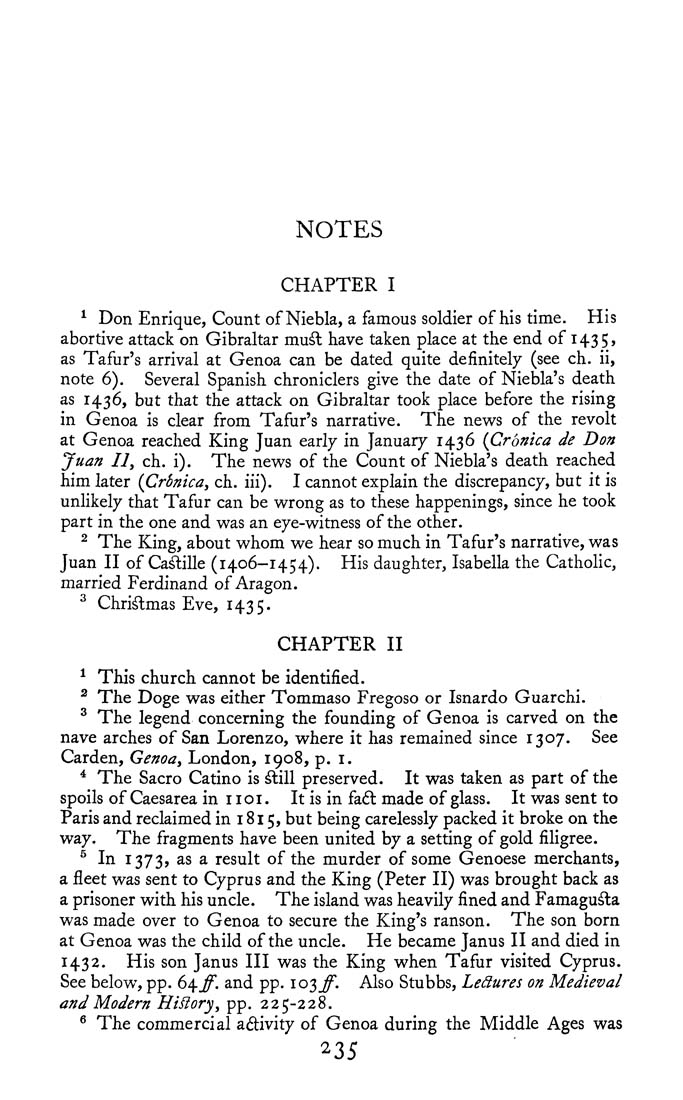NOTES
CHAPTER I
^ Don Enrique, Count ofNiebla, a famous soldier of his time. His
abortive attack on Gibraltar mu^ have taken place at the end of 1435,
as Tafur's arrival at Genoa can be dated quite definitely (see ch. ii,
note 6). Several Spanish chroniclers give the date of Niebla's death
as 1436, but that the attack on Gibraltar took place before the rising
in Genoa is clear from Tafur's narrative. The news of the revolt
at Genoa reached King Juan early in January 1436 {Crbnica de Don
Juan II, ch. i). The nev^s of the Count of Niebla's death reached
him later {Crbnica, ch. iii). I cannot explain the discrepancy, but ii is
unHkely that Tafur can be wrong as to these happenings, since he took
part in the one and was an eye-witness of the other.
^ The King, about whom we hear so much in Tafur's narrative, was
Juan II of Ca^ille (1406-1454). His daughter, Isabella the Catholic,
married Ferdinand of Aragon.
^ Chri^mas Eve, 1435.
CHAPTER II
^ This church cannot be identified.
The Doge was either Tommaso Fregoso or Isnardo Guarchi.
The legend concerning the founding of Genoa is carved on the
nave arches of San Lorenzo, where it has remained since 1307. See
Carden, Genoa, London, 1908, p. i.
* The Sacro Catino is ^ill preserved. It was taken as part of the
spoils of Caesarea in 1101. It is in fa6l made of glass. It was sent to
Paris and reclaimed in 1815, but being carelessly packed it broke on the
way. The fragments have been united by a setting of gold filigree.
^ In 1373, as a result of the murder of some Genoese merchants,
a fleet was sent to Cyprus and the King (Peter II) was brought back as
a prisoner with his uncle. The island was heavily fined and Famagu^a
was made over to Genoa to secure the King's ranson. The son born
at Genoa was the child of the uncle. He became Janus II and died in
1432. His son Janus III was the King when Tafur visited Cyprus.
See below, pp. 6i\.ff. and pp. 103^. Also Stubbs, Ledures on Medieval
and Modern HiSlory, pp. 225-228.
^ The commercial activity of Genoa during the Middle Ages was
3
|








